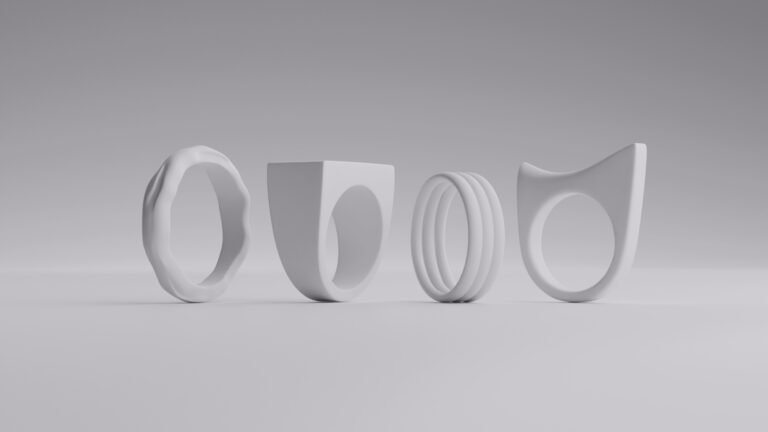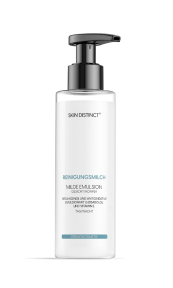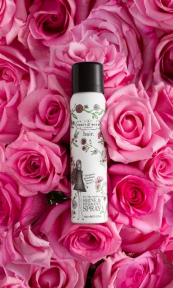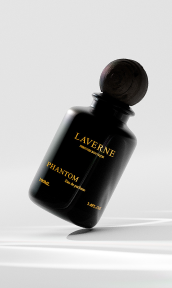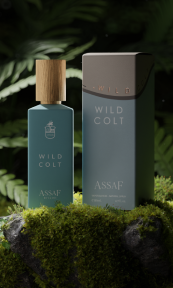Storytelling has always been a powerful tool in marketing. However, in a world inundated with information, businesses must strive to tell stories that resonate on a deeper level. When a brand taps into the five senses, it creates an experience, beyond just telling a story. Leveraging sight, sound, touch, taste, and smell to craft a multi-sensory narrative can elevate your product story, leaving a memorable impact on your audience. Here’s how to harness the power of the five senses to tell your product story more effectively.
Sight: The Power of Visual Storytelling

The saying “a picture is worth a thousand words” holds, especially when it comes to product marketing. Visual storytelling begins when a customer sees your product or brand, making sight one of the most impactful senses. To fully leverage the power of visual storytelling, consider how every visual aspect can embody your brand’s values and personality.
- Brand Imagery: Use imagery that captures not only the product but also the lifestyle or emotions it’s intended to evoke. If you’re selling outdoor gear, for example, images of your product in stunning, adventurous landscapes can inspire feelings of exploration and freedom. Focus on images that highlight the most visually compelling aspects of your product, like its craftsmanship, design details, or unique selling points.
- Visual Identity Consistency: Ensure consistency across your visual assets by using a unified color palette, fonts, and style guidelines. Consider every touchpoint, from your website and social media platforms to your packaging and advertisements. For instance, Apple’s minimalist, clean design language speaks to simplicity and innovation, creating a distinct visual identity that’s immediately recognizable.
- Storytelling Videos: Video content allows you to create dynamic narratives that go beyond still images. Whether it’s a short Instagram reel showing a product in action or a more detailed brand story, video can encapsulate the mood, movement, and atmosphere around your product. Use cinematic elements, slow-motion, or time-lapse to highlight features, capture emotions, and evoke curiosity about the product’s benefits.
When you have a strong visual identity, you allow customers to recognize, remember, and connect with your brand. Visual storytelling isn’t just about aesthetics—it’s about communicating the essence of your brand at a glance.
Sound: Creating a Sonic Identity

Sound has a profound effect on emotions, often triggering memories and feelings in ways that visuals alone cannot. By curating an auditory experience, you can shape how customers perceive your product and brand.
- Background Music: Think about the kind of mood you want to set. Consider how different genres or tempos influence the customer’s perception of your product. A luxury product might benefit from slow, soothing music that reflects elegance, while a fitness product might thrive with an upbeat, energetic soundtrack that evokes motivation.
- Sound Effects: Subtle sounds that relate to your product or brand can create powerful sensory associations. For example, the satisfying sound of a car door closing can evoke a sense of security and quality. Similarly, a “pop” sound from a new can of soda immediately brings refreshment to mind. These sound effects can be included in ads, videos, or even within the product itself to reinforce the brand’s sensory experience.
- Branded Jingles and Voiceovers: Consider the tone, accent, and energy level of the voices used in your marketing. Voiceovers should be clear and convey the right emotion for your brand, whether it’s playful, serious, or compassionate. Well-crafted jingles also leave a lasting impression, like McDonald’s “I’m Lovin’ It” or Intel’s iconic four-note chime, which instantly connects consumers to the brand.
By integrating sound that reflects your brand, you create a consistent and memorable experience across different platforms. A well-crafted sonic identity is just as recognizable as a logo, helping your product resonate on an emotional level and stay with customers long after they’ve interacted with it.
Touch: The Power of Texture and Tactile Experience

Touch is particularly significant in creating tangible connections with your product, especially when it involves textures, weight, and materials. This sense is crucial in physical products but can also be evoked in digital spaces through imaginative descriptions.
- Product Packaging: Use materials that not only reflect your brand’s values but also enhance the tactile experience. For example, eco-conscious brands can use biodegradable or recycled materials that feel natural and earthy. Luxury brands, on the other hand, might choose smooth, embossed, or metallic finishes that convey a sense of exclusivity. Unboxing experiences have become a crucial aspect of touch, as the way a customer interacts with the packaging can influence their perception of the product’s value.
- In-Store Experience: In physical locations, create interactive displays that encourage customers to touch, feel, and experience your product’s materials and build quality. If you’re marketing clothing, allow customers to feel the fabric. If it’s technology, let them handle the devices. Physical engagement fosters a stronger sense of connection and lets customers imagine using the product in their daily lives.
- Online Tactile Descriptions: With the rise of e-commerce, conveying touch through words has become essential. Use descriptive language and detailed images to describe a product’s texture and weight. Terms like “smooth velvet,” “rugged leather,” or “feather-light” can help evoke a sensory experience even when customers cannot physically touch the product.
Whether it’s the feel of a product in-store or the perceived texture through detailed descriptions online, touch allows you to convey a sense of value and thoughtfulness. Tactile experiences make your product more than just an object—they transform it into something personal and memorable, adding an extra layer to your brand story.
Taste: Making a Memorable Impression Through Flavor

Taste is especially relevant for consumable products, but taste associations can also be used creatively for non-food products. By evoking flavors, you can trigger memories and emotions associated with taste, even if the product isn’t edible.
- Samples and Tastings: Offering samples or tastings at events or stores allows customers to directly experience the quality of your product. This is particularly effective for food and beverage brands. Not only do they get to try it, but they also form a memory of the taste, which can drive them to make a purchase.
- Evocative Descriptions: For products that aren’t edible, use descriptive language to evoke taste-related associations. For example, you could describe the scent of a candle as having “notes of warm vanilla and spiced cinnamon” or the color palette of a lipstick as “richly decadent, like a piece of dark chocolate.” This sensory language can help customers feel an emotional connection even when taste isn’t physically present.
- Pairings with Other Brands: If your product aligns with certain food or beverage experiences, consider collaborations that bring taste into the brand experience. For example, a high-end bookstore could partner with a coffee brand to offer an aromatic coffee bar, creating a rich sensory environment that complements the brand’s story of comfort and sophistication.
When customers experience your product through taste, you create an immediate bond that can’t be replicated through other senses. Taste triggers vivid memories and emotions, turning your product into an experience that people remember and crave. With taste, you have the power to turn a single moment into a lasting impression.
Smell: The Emotional Connector

Scents are intimately connected to memory and emotion, making smell an incredibly potent sense to engage with. A memorable scent can linger in the mind and transport a customer back to their experience with your product.
- Signature Scents: Many brands use signature scents to establish a unique identity. Hotels, for example, often have a custom fragrance in the lobby that helps guests associate the scent with luxury and relaxation. Clothing retailers might infuse their stores with a light, floral fragrance, making customers feel fresh and energized. A signature scent can create a feeling of exclusivity and brand familiarity.
- Product Scent: For products that are naturally scented, emphasize the qualities and origins of the fragrance in your marketing materials. If your product uses essential oils, describe the origin and extraction process, which adds value and creates a richer story around the scent. Scents like lavender, eucalyptus, and citrus can evoke calming, refreshing, or energizing emotions, depending on the mood you want to create.
- Descriptive Language: For non-scented products, use evocative language to associate them with particular scents. You might describe a luxurious blanket as having the “comforting scent of freshly laundered linens” or a travel experience as “infused with the salty air and fragrant pine forests.” Descriptive language can help paint a sensory picture, bringing your brand experience to life through the imagination.
Engaging customers through smell allows you to create a unique emotional anchor, setting your brand apart and forging deep, lasting connections. Scents create associations and memories that stay with customers long after they’ve experienced your product, making it one of the most powerful senses for storytelling.
Crafting a Multi-Sensory Experience: Bringing it All Together

Wrapping up
By tapping into the five senses, brands can create a vivid and immersive product story that goes beyond words and images. Sensory storytelling helps customers not only understand but feel what your brand is about, forging stronger connections and lasting memories. So whether you’re launching a new product or revitalizing your brand, consider how you can bring the power of sight, sound, touch, taste, and smell to your storytelling strategy. It may be the key to capturing the hearts—and senses—of your audience.
FAQ
How can sensory storytelling benefit my brand?
Sensory storytelling enhances customer engagement by creating a multi-dimensional experience that resonates emotionally. By appealing to the five senses—sight, sound, touch, taste, and smell—you can build a deeper, more memorable connection with your audience, which can increase brand loyalty and make your product more memorable.
Which senses are most important for non-physical products, like software or digital services?
For non-physical products, sight and sound are typically the most relevant. You can create a strong visual identity through colors, fonts, and design elements, while sound can be used in brand videos or within the user interface to enhance the digital experience. Even though touch, taste, and smell might not apply directly, you can use descriptive language to evoke these senses and create an engaging narrative around your product.
How do I make my product stand out using the sense of smell if it’s not naturally scented?
For products without a natural scent, consider incorporating a signature scent in your physical locations or packaging. You can also evoke scent through language in your marketing materials, using descriptive terms that help customers imagine a sensory experience. This approach can work well for digital campaigns by associating your product with a particular feeling or environment, even when customers don’t physically smell it.
What are some ways to create a memorable tactile experience for online shoppers?
While customers can’t physically touch your products online, you can use detailed descriptions and high-quality images to convey texture and feel. For example, you could describe a product as “soft and luxurious,” “rugged and durable,” or “light and breathable.” Videos, especially those that show the product in use, can also help communicate the tactile qualities, giving shoppers a better sense of the experience.
Is it necessary to incorporate all five senses into my brand’s storytelling?
No, it’s not necessary to use all five senses—focus on those that are most relevant to your product and target audience. Start with one or two senses that best align with your brand message, and gradually incorporate others as it makes sense for your strategy. The key is to create a cohesive, immersive experience that enhances your brand narrative rather than overwhelming your customers.







